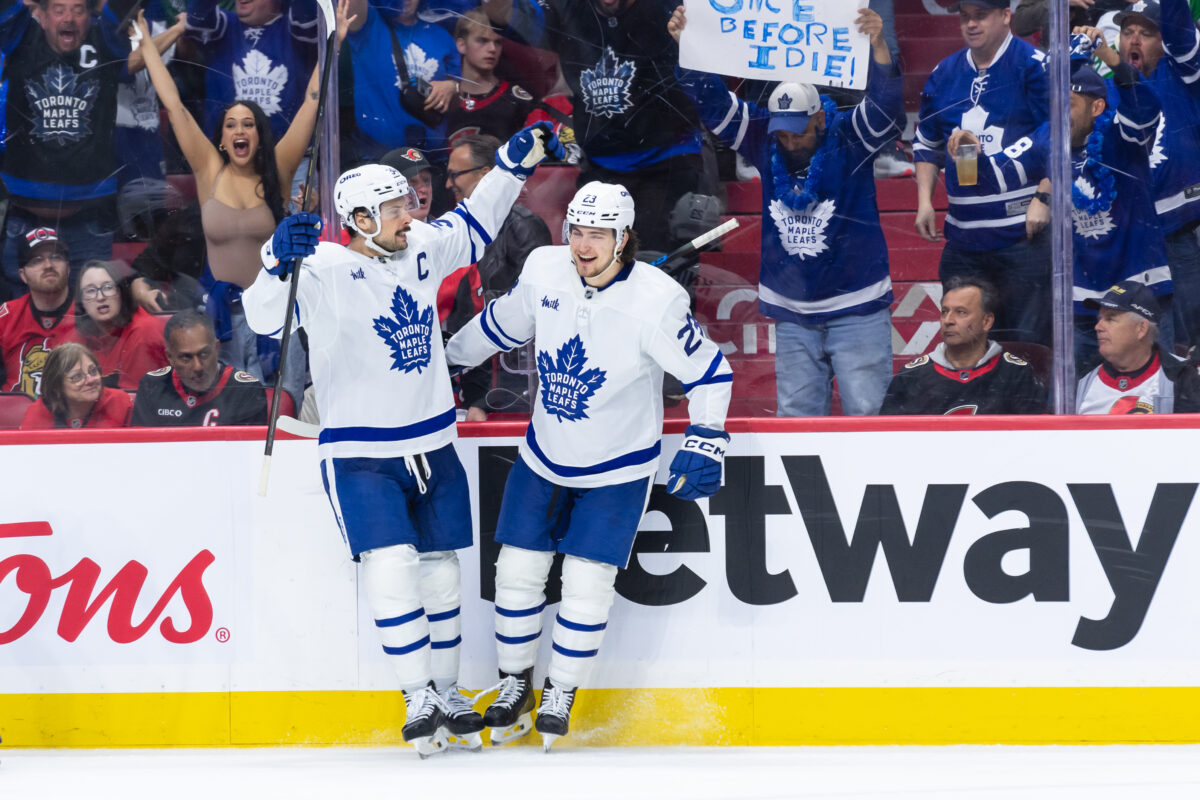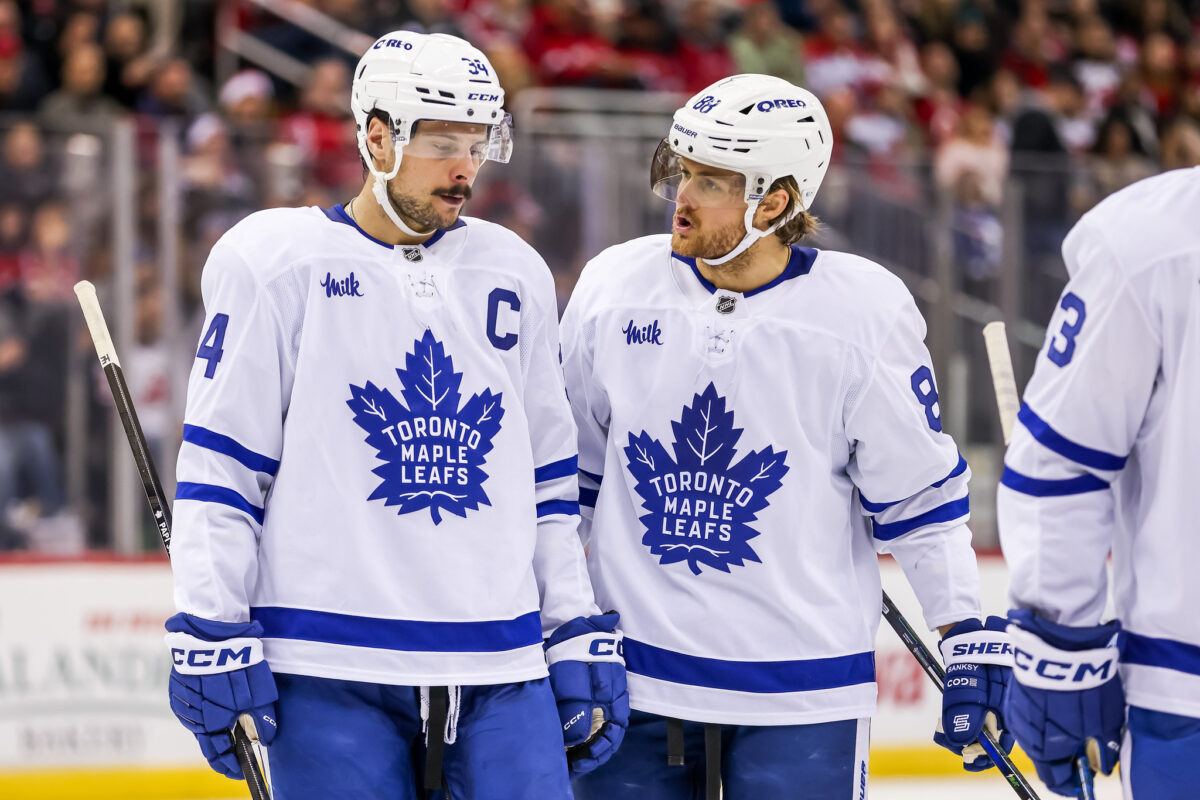Every once in a while, an idea hits the hockey world that sounds so outrageous you almost admire the audacity. When Nick Kypreos first tossed out the idea that the Toronto Maple Leafs might, at some point, have to consider trading Auston Matthews, most of us filed it under Classic Kyper — the kind of radio hit that wakes up a slow Tuesday. Kyper isn’t averse to a bit of spice or heat, but often that’s all there is.
Related: Maple Leafs’ Nine-Year Playoff Streak Deserves More Appreciation
But here’s the thing: the longer this Maple Leafs season grinds along, the harder it is to swat the idea away with the usual eye-roll. Not because anyone thinks a Matthews trade is happening. It isn’t. But because the logic underneath the noise — the stuff no one really wants to talk about — keeps creeping back into the frame.
Here’s the foundational truth about trade rumours. They don’t tell you what’s going to happen. They tell you what a team is wrestling with. And right now, Toronto is wrestling with Matthews’ reliability.
The Uncomfortable Truth the Maple Leafs’ Organization Doesn’t Want to Say
My thinking here isn’t about pointing fingers at Matthews. He’s still one of the most gifted scorers the league has seen in 20 years. When he plays, he tilts the ice. When he’s rolling, the team looks entirely different. Everyone knows that.
Related: The Maple Leafs Need to Rethink Auston Matthews’ Role
But the Maple Leafs have now gone through multiple seasons where their best player isn’t consistently available. Last season, he played 67 games; this season, he practices, looks ready, and then suddenly misses time with another upper-body issue. Reporters say it’s unrelated to last year, but nobody really knows, and Matthews, who has never been one to share openly, won’t talk about it.
The team has no clear answers either; the story repeats each winter in slightly different language. At some point, uncertainty stops being a string of bad breaks and starts feeling like a pattern. And organizations — especially ones like the Maple Leafs who are eternally under pressure — are allergic to patterns they can’t predict or control.

(Marc DesRosiers-Imagn Images)
So when Kypreos said what he said, he wasn’t really talking about the trade itself. He was talking about the part of the conversation fans hate. Here’s the real question beneath the trade rumours: How long can a franchise operate without knowing whether its best player will be fully available when the season tightens?
The Franchise Logic: Timing, Pressure, and a Window That Isn’t Quite Open
Kypreos’s argument wasn’t that the Maple Leafs should trade Matthews. It was that, for the first time, there might be a reason to at least think about the situation instead of pretending everything is fine.
Let’s take an honest look at the Maple Leafs’ current context: First, their playoff odds are shaky. Mitch Marner is gone, which removed a significant pillar of the core. John Tavares is older; still smart, still steady. While he’s stayed healthy and is having a huge season, he’s no longer the engine. William Nylander is exceptional in a list of ways, but he’s not a center you build your team around.
Related: NHL 2025-26 Power Rankings: Week 6
Finally, in two seasons, Matthews is eligible for another contract. Another decision point. Another round of deep conversations about “What is the plan here?” Another new DNA change? Given the trajectory the team is currently on, would any thinking person lay money on the retention of either general manager Brad Treliving or head coach Craig Berube? I wouldn’t.
If you’re an organization staring at a potential slide, you don’t wait until a superstar’s value tanks. The NHL has become a league of timing windows. You either move early or you get cornered late. In that context, I believe, lies the logic behind Kypreos’s comment. What he’s laying out isn’t a prediction; it’s a pressure point.
Considering the Player’s Logic: Matthews Has a Clock, Too
This is the part that seldom gets discussed because it shifts the whole narrative. The Maple Leafs aren’t the only ones with decisions to make. Matthews has to think about his future as well. Marner, for his own reasons, got there first. He saw the writing on the wall and hit the road.

If the team misses the playoffs and slides toward a retool, would Matthews want to spend his prime years waiting for another reset? He has two seasons before he can sign again. That gives him his own window to judge where the organization is heading. Given this context, doesn’t his shorter-term contract choice make more sense?
Players of his calibre don’t sign blindly. They sign into stability and direction, knowing sustained success is the key to a Stanley Cup run. For the Maple Leafs, if they can’t offer clarity — on health, on lineup, on identity — then Matthews has every reason to ask hard questions.
That’s simply the reality for any elite player in a shifting NHL environment who wants to win hockey’s biggest prize.
What This Rumour Really Tells Us About the Maple Leafs
The Maple Leafs are not shopping Matthews. The “trade talk” isn’t about actually trading him. It’s about the ecosystem surrounding the team. It’s about the injuries, the timing, the pressure, and the possibility that the competitive window may not be as open as it was a season ago.
Related: Maple Leafs’ Matthews Learned His Hockey Skills in a Phoenix Thrift Store
What the Matthews’ trade rumour really does is shine a spotlight on the cracks the organization has been trying to plaster over. It turns down the volume on the speculative stuff and turns up the volume on the questions management actually has to face.
At its core, the Matthews trade chatter highlights the fundamental questions that any organization must grapple with: how durable is your core star, what direction is the team heading, when is the window of opportunity, and how aligned are player and management? These are not easy questions, and the rumour exists not as a prediction but as a mirror reflecting the uncertainty that lingers behind the public façade.
